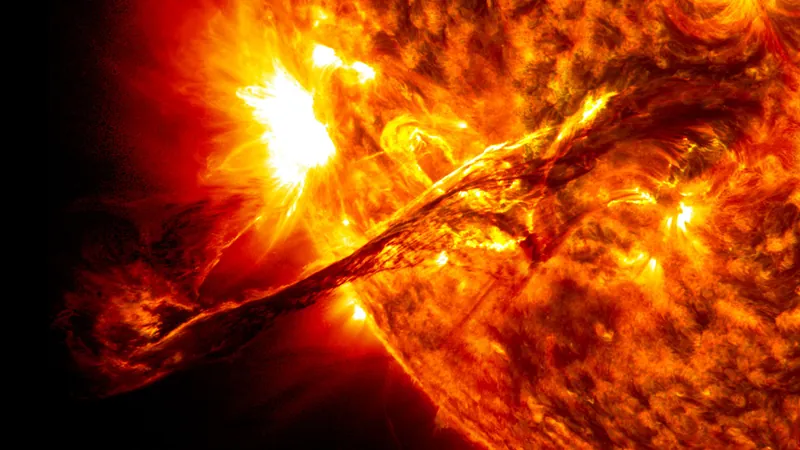
Blasts from the Past: Unveiling the Hidden Dangers of Historic Space Storms!
2024-10-24
Author: Siti
In an astounding review published in the Journal of Geophysical Research: Space Physics, researchers have unearthed shocking new insights about historic space storms that could have catastrophic implications for our modern world. Buckle up, because what they found might just send chills down your spine!
A Historical Perspective on Space Storms
On August 4, 1972, an unprecedented burst of solar plasma zipped through space, colliding violently with Earth's magnetic field just 14.6 hours after it was expelled from the Sun. This wasn't just a regular day in space weather; this was the fastest recorded journey of solar plasma from the Sun to Earth! The fallout from this space storm was significant, causing extensive disruptions to electrical and communication grids. It’s believed that this disturbance even led to accidental detonations of U.S. naval mines lurking underwater off the coast of North Vietnam, highlighting just how far-reaching the effects of such storms can be.
The 1989 North American Space Storms
Fast forward to March 6-19, 1989, and another series of space storms shook North America to its core. The most powerful of these, striking on March 13, unleashed chaos on electrical systems, culminating in a shocking 9-hour blackout that plunged Quebec, Canada into darkness. This marked a pivotal moment in our understanding of space weather and its ability to wreak havoc on modern infrastructure.
Research Insights
The researchers, led by Tsurutani et al., meticulously compared the 1972 and 1989 space storms and also examined other historical events. Their findings suggest that current space storms could be even more potent than the infamous Carrington event of 1859, which is still considered the benchmark of powerful geomagnetic disturbances. The implications of their research are staggering—if a storm of that magnitude were to strike today, the resulting damage could be in the trillions, with millions facing extended power outages lasting up to two years!
Characteristics of the Storms
While both storms were propelled by coronal mass ejections (CMEs), which entails bursts of energized plasma ejected from the Sun during solar flares, each storm had unique characteristics. In contrast to the 1972 CME, which traveled at record speeds, the 1989 events were slower and carried flares that were significantly less intense. However, the 1989 storm lasted a remarkable 23 hours, setting a record for the duration of magnetic storms.
Potential for Future Storms
Drawing on data from these historical events, Tsurutani and team speculated that, under different conditions, the 1972 CME could potentially have unleashed even greater destruction than the Carrington event itself. In fact, their analysis indicates that the greatest storm of 1989 outmatched the Carrington event in terms of energy carried by electrons in the Earth's ring current—a stream of charged particles that intensifies during such storms.
With each new discovery, we come to realize just how precarious our situation might be in the face of solar storms. These events remind us that, while we’ve made incredible advancements in technology, we remain vulnerable to the whims of space weather. As scientists continue to explore the complexities of extreme space weather, this research will play a crucial role in shaping our preparedness and predictive capabilities for future solar events.
The Future of Space Weather
Could we be on the brink of facing another space storm that could change life as we know it? Stay tuned as researchers delve deeper into the mysteries of our universe and the potential threats lurking just beyond our atmosphere!





 Brasil (PT)
Brasil (PT)
 Canada (EN)
Canada (EN)
 Chile (ES)
Chile (ES)
 España (ES)
España (ES)
 France (FR)
France (FR)
 Hong Kong (EN)
Hong Kong (EN)
 Italia (IT)
Italia (IT)
 日本 (JA)
日本 (JA)
 Magyarország (HU)
Magyarország (HU)
 Norge (NO)
Norge (NO)
 Polska (PL)
Polska (PL)
 Schweiz (DE)
Schweiz (DE)
 Singapore (EN)
Singapore (EN)
 Sverige (SV)
Sverige (SV)
 Suomi (FI)
Suomi (FI)
 Türkiye (TR)
Türkiye (TR)